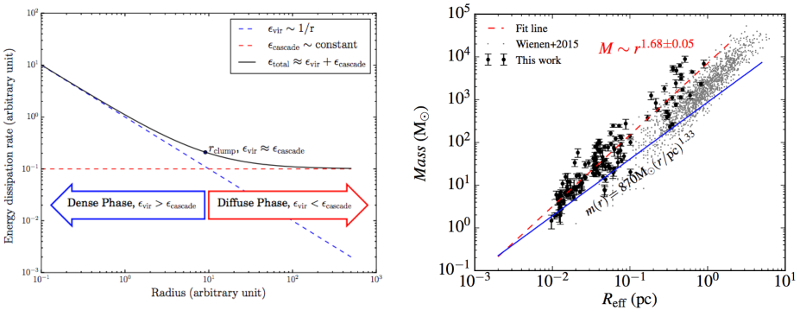
|
EPoS |
|
EPoS Contribution
|
|
Star Cluster Scaling Relations from Turbulence-Gravity Interplay
Guang-Xing Li USM Munich, Munich, DE | |
| Recent observations indicate that the masses and sizes of star clusters in the Milky Way are correlated where mcluster ~ rcluster1.67. We analytically study the interplay between turbulence and gravity in the molecular ISM, and found that structures that can dynamically detach from the ambient medium and collapse should obey m ~ r5/3. The normalisation of the scaling is determined by the level of the ambient turbulence. The analytical formula describes the observed scaling relation to a very good accuracy. This suggests that considering the interplay between turbulence gravity can provide far-reaching insights about the formation of high-mass stars and star clusters. | |
 | |
| Caption: Left : Schematic representation of the structure of a clump. At small radii (inside the clump), the energy dissipation is mainly caused by the dissipation of the virialised turbulence, and at larger radii, the energy dissipation is caused by turbulence cascade from the large-scale. Right: A fit to the observations of the structures indicate that they satisfy m ~ r1.68, which resembles our model prediction of m ~ r5/3 ~ r1.67. | |
| Collaborators: C.-P. Zhang, MPIA, DE |
Key publication
Suggested Session: High-mass star/star cluster formation |